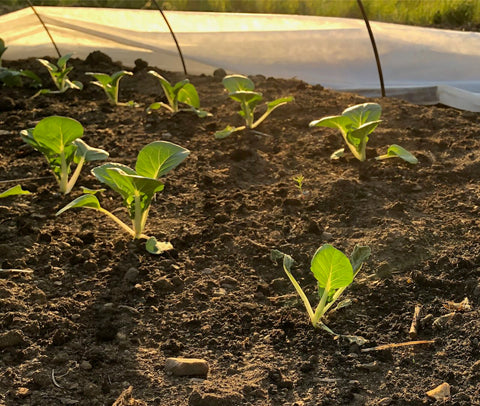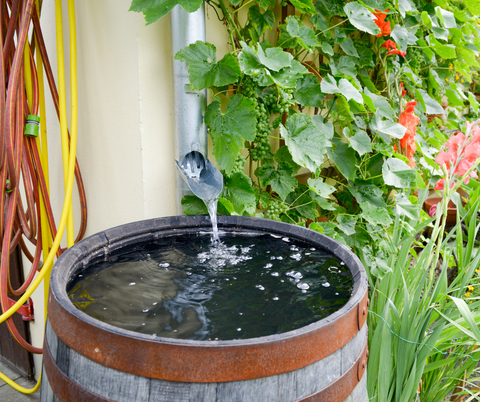Water-wise gardening in the Yukon | Tips to conserve water this summer
Posted by Aiden McRae on

Water is a precious and essential part of life in the Yukon. It flows through our everyday lives, our recreation and our gardening projects. It cycles through groundwater, aquifers and several major watersheds. Yukon Water has been studying how climate change may affect the hydrological cycle and quality of water.
Changes are showing up with earlier snowpack melt, thawing permafrost, and availability of groundwater. Significantly, “in 50 years, between 1958 and 2008, the total ice area in Yukon shrank by 22%.” The impacts are not fully understood yet, but water sources may become more vulnerable to contamination.
Writer and permaculture teacher Heather Jo Flores writes about “water-wise gardening” in her free book Food Not Lawns, and points out that “only about 0.05 percent of the water on Earth is freshwater that is accessible and available for human use.” Water is precious.
What does this mean for your backyard garden, grow boxes and landscape projects? The more we can all conserve water, the better! Yukon’s short, intense summer is a dry one. We want to share smart tips to help you cut down on watering.
Site selection
One of the first steps in gardening and permaculture is to observe your available site, and pay close attention to how water flows through, and ideally, is absorbed into the soil. Heather Jo Flores recommends thinking about microclimates and designing your “garden around a water system that makes sense for the ecology in which you are working.” If at all possible, choose a site with healthy soil, where the water will not drain away too fast.
Seed and plant selection

When choosing your seeds for the year, look for information about irrigation requirements. Some varieties may need less water than others. That said, water is crucial for raising healthy, delicious vegetables. For instance, carrots taste much better when they contain lots of water!
Soil building

Something magical happens when you feed your soil with organic matter such as biochar, compost, manure, and peatmoss. These organic materials will boost the soil quality by "maintaining a good water balance, supporting beneficial microorganisms in their work of cycling nutrients and many other important functions. Healthy soils are also porous and have good structure, which allows for the movement of air and water, and prevents compaction.”
And, explore our product offerings of soil blends, biochar, compost and manure.
Mulching

Mulching is the practice of adding a layer of woodchips, hay, straw, leaves, or other lightweight organic materials on the surface of the soil and around growing plants. Like a mossy forest floor, mulch protects the soil and retains moisture below the surface. Ask a master gardener - this tool makes a world of difference. Try to avoid choosing materials that will create a mat, like grass and leaf clippings. It’s important for soil to breathe. Bonus - mulch cuts down on weeding!
Water capture and irrigation

This is a topic that deserves its own blog! Explore the world wide web for all of the nifty approaches to irrigation practices that are out there. Some basic practices include using rain barrels, watering thoroughly early in the morning and evening before the sun is too powerful, implementing drip irrigation, and avoiding sprinkler systems that lose a lot of water to evaporation and run-off.
What are your water-wise tips? Leave us a comment below!
Photos: Aiden McRae & Canva
References
“Changes to Water Resources,” Yukon Water.
“The Ecological Home Water Cycle,” Food Not Lawns, Heather Jo Flores.
“Growing 101,” YukonGrow, Michel Duteau.Share this post
- Tags: gardening

